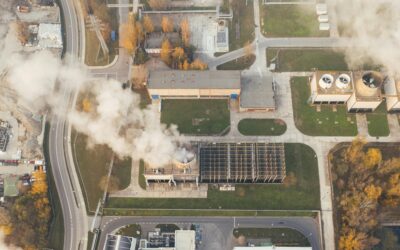There is no doubt Earth is experiencing the adverse effects of climate change. The impacts of climate change include threats to humans and ecosystems worldwide. Fortunately, we know the causes of global warming, and we know what it will take to solve the climate crisis. Reducing carbon pollution and changing our personal behavior will go a long way in preserving the health of the Earth.
This article will explore the severity of the climate crisis and what human activities have caused it. We’ll look into what climate science says about the changes that have occurred and the ones we need to make to achieve the goals climate scientists have set. If the world comes together to stabilize Earth’s temperature, we can see a future with health and prosperity for people worldwide.
What Is the Climate Crisis?
Earth’s temperature has risen 0.14 degrees Fahrenheit (F) every decade since the industrial revolution, leading to dramatic changes in the global climate. Global climate change poses a threat to the future of our planet. All life on Earth, including human society, is at risk due to the changes caused by increasing global temperatures. Extreme weather patterns, food and water scarcity, risks to human health, and the deterioration of ecosystems and biodiversity are some examples of our changing climate.
While these changes are projected to have an impact on what Earth will look like in the future, the climate crisis is something we must think about today. We already see shifts around the world as a result of global warming:
- The Earth has warmed about 1.98 degrees F between 1901 and 2020, and as a result, we are currently seeing many rapid changes occur around the globe.
- The rate of sea-level rise has accelerated since the end of the 20th century and is now rising 3.2 millimeters per year.
- Glaciers are shrinking, and the ocean area covered by Arctic sea ice at the end of each summer has shrunk by 40% since 1979.
In addition, droughts now plague certain regions of the world and have resulted in limited access to clean drinking water. Plus, increased air temperatures have caused crops to require more water, placing an even greater strain on the limited water resources and presenting a threat to food resources as well.
Extreme weather patterns have become more common around the globe. We’ve already mentioned how heat and drought pose a threat to essential resources, and in other regions of the world, storms and flooding have started to occur with more frequency.
Increases in extreme weather have resulted in significant amounts of damage to homes and infrastructure, displacing people and placing a burden on the economy. Wildfires, hurricanes, tornadoes, and flooding have resulted in weather events that cost over a billion dollars in damages. For example, Hurricane Katrina cost $182.5 billion. While, in California, the 2021 drought cost the agricultural sector $1.1 billion.
The climate crisis poses a real threat to the sustainability of our planet. The time to take action is now so we can prevent further devastating changes from occurring.
What Are the Three Major Causes of the Climate Crisis?
The first step in fighting the climate crisis is understanding what has caused it. The three human activities that contribute most to climate change are fossil fuel combustion, deforestation, and raising livestock. All three of these activities contribute to increased greenhouse gas concentrations in the atmosphere, resulting in a more significant greenhouse effect that quickly warms the atmosphere.
Fossil Fuel Combustion
Burning fossil fuels has many consequences and is the number-one contributor to greenhouse gas emissions. Many sectors use fossil fuels as a source of energy. According to the EPA, the sectors that burn the most fossil fuels and release the most greenhouse gases in the United States are transportation and electricity generation.
The transportation sector released 27% of the greenhouse gas emissions in 2020. Carbon dioxide is released when petroleum-based fuels are burned in the vehicles we use for transporting humans and goods. Cars, semi-trucks, boats, and planes all rely on fossil fuels to run.
Electricity is generated to power homes, commercial buildings, internet servers, and much more. This sector was responsible for emitting 25% of the greenhouse gas emissions during 2020. Around 60% of electricity production in the United States comes from burning fossil fuels like coal and natural gas.
Deforestation
Forests act as carbon sinks. Carbon sinks are environments that naturally absorb carbon dioxide from the atmosphere and store that carbon. When forests are cut down for agricultural purposes or urban developments, all the carbon stored in the trees’ leaves, branches, and trunks is released into the atmosphere as the fallen trees decay or are burnt.
Between 2015 and 2017, the global reduction of tropical forest areas resulted in a release of 4.8 billion tons of carbon dioxide per year. That’s an equivalent of up to 10% of the overall human emissions released per year.
Not only does cutting down trees directly release carbon into the atmosphere, but their absence also slows how much carbon is absorbed out of the atmosphere. A reduction in forestland around the globe means our planet cannot naturally sequester atmospheric carbon as efficiently.
Raising Livestock
The practice of raising livestock results in the release of 14.5% of global greenhouse gases. One cow alone emits 220 pounds of methane each year as part of its digestive process, making cows the number-one emitter of greenhouse gases in the agricultural sector.
Livestock primarily emit methane gas. Methane gas does not last in the atmosphere as long as carbon dioxide, but it warms the atmosphere at a much faster rate. Methane only stays in the atmosphere for 12 years compared to CO2, which can last well over hundreds or thousands of years. However, methane warms the atmosphere 28 times faster than carbon.
How Can We Help the Climate Crisis?
The scientific community agrees that the global climate is warming due to increases in greenhouse gas emissions. There are measures we can take to slow the warming process.
The foremost goal that the world must achieve is slowing the rate at which Earth’s temperature is warming. The best way to achieve this is through greenhouse gas mitigation. The Paris Agreement is an international agreement adopted by many nations that aims to limit global warming by 1.5 degrees Celsius (C), or 2.7 degrees F.
If we do not reduce global emissions by 2030, we will not reach the goal of limiting global warming to 1.5 degrees C. Fortunately, there is evidence that we have the tools required to cut global emissions by about half by 2030. To achieve this goal, every sector must take action to reduce its carbon footprint:
- The energy sector must switch to clean energy and renewable energy solutions like wind, solar, or hydropower.
- The transportation sector must transition from running on petroleum power to electric or hydrogen.
- Agricultural practices should focus on reducing methane emissions associated with livestock and transition to more sustainable foods.
If all industries take action to reduce emissions, and each individual makes it a point to reduce their own emissions, we can achieve the required goal of reducing global emissions by 43% come 2030. These reductions are only the start of fighting the climate crisis though. The ultimate goal is to reduce global carbon emissions to net-zero so the Earth’s temperature can stabilize.
Is Climate Change a Global Issue?
The reason the whole world must get involved in the fight against climate change is that the rising global temperatures present a threat to everyone around the world. No nation will go unaffected by the drastic changes that will occur if climate change is allowed to continue unchecked. The social cost of carbon emissions and the changing climate creates issues for global public health and economic prosperity.
No matter where you live in the world, food and water are essential to human health. With climate change threatening clean water sources and food production, public health has become an increasing concern amidst global warming. Plus, increases in extreme weather patterns have exposed individuals to poor living conditions. For example, fires reduce air quality and can contribute to certain illnesses.
Climate change presents a risk to economic stability around the world. Extreme weather causes expensive damage. The global economy is expected to lose between 11% and 14% of its total production due to climate-related consequences. This means that all economies worldwide are expected to shrink if climate change continues at the rate it is. Smaller economies mean less prosperity for individuals in every nation.
Is Global Warming Increasing or Decreasing?
Global warming is currently increasing. The past decade has been considerably warmer than previous decades. With this information, it is essential for us to take action as soon as possible in order to reduce our planet’s rising temperatures.
Here is some information to keep in mind about global temperature trends:
- In the past decade, 2016 was the warmest year on record.
- 2020 is the second-warmest year recorded.
- The decade from 2011 to 2020 was the warmest ever recorded since temperatures began being recorded with thermometers.
- 2021 tied 2018 for the sixth-warmest year recorded.
- The January 2022 temperature ranked the sixth highest, and it is likely that 2022 will rank as one of the top 10 warmest years.
How Can You Help Fix the Climate Crisis Today?
If you would like to take climate action today, there are many ways you can make a difference — from spreading awareness of the threat at hand to participating in carbon offsetting.
The first thing you can do is educate yourself and spread awareness about the threats that climate change presents. Understanding how humans cause climate change and the effects we have on our environment is a great first step. Then, you can spread the information to your friends and family so they understand what we are up against and how essential it is that everyone gets on board to effect change.
You can also change some of your daily habits to be more climate-friendly. If you have the opportunity to walk or ride your bike instead of taking your car, that’s great. Also, you can become mindful of the products you buy and make sure they are sustainably developed and support green projects. You can also try to save water and energy in your home or business.
Another great way to help fix the climate crisis is to participate in carbon offsetting. Carbon offsets are credits you purchase that reduce your carbon footprint. The way it works is that each carbon credit represents a real reduction in carbon from the atmosphere. These reductions are due to projects like wind farms or methane gas capture. The money you use to purchase the offsets supports these green projects and offsets your carbon footprint.
Solving the Climate Crisis Is Necessary for Today and the Future
The climate crisis poses a real threat to the state of our planet. Human activities like burning fossil fuels, deforestation, and raising livestock contribute to changing weather patterns and threats to public health.
Climate change affects everyone worldwide, so it’s important that all industries around the world start reducing their emissions to slow global warming. While the trend of planet-warming has been increasing, we can all take necessary actions in our own lives to contribute to the cause of reducing global climate change.
Terrapass has carbon-offsetting solutions to get you started in the fight against the climate crisis.
Brought to you by terrapass.com
Featured image:











